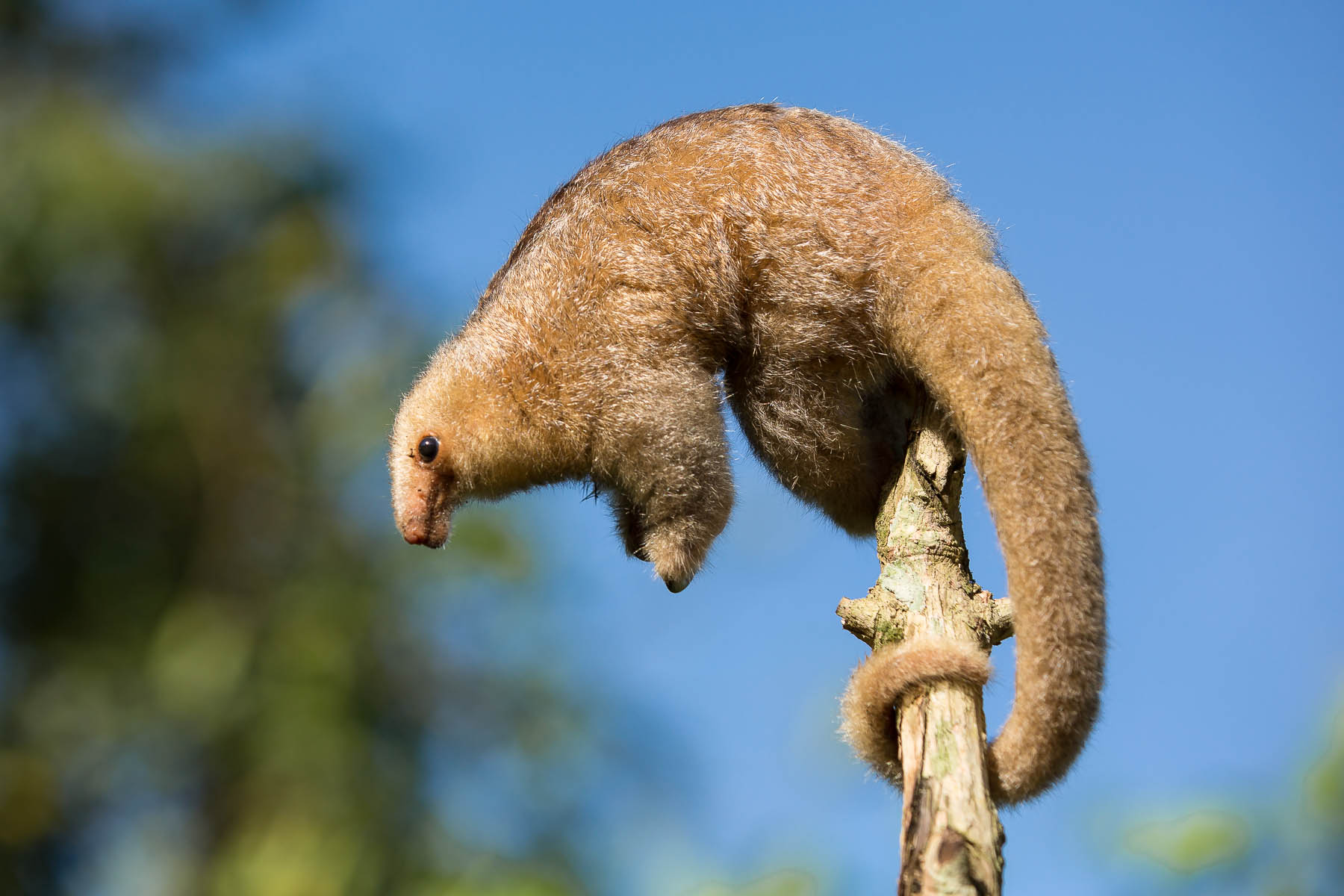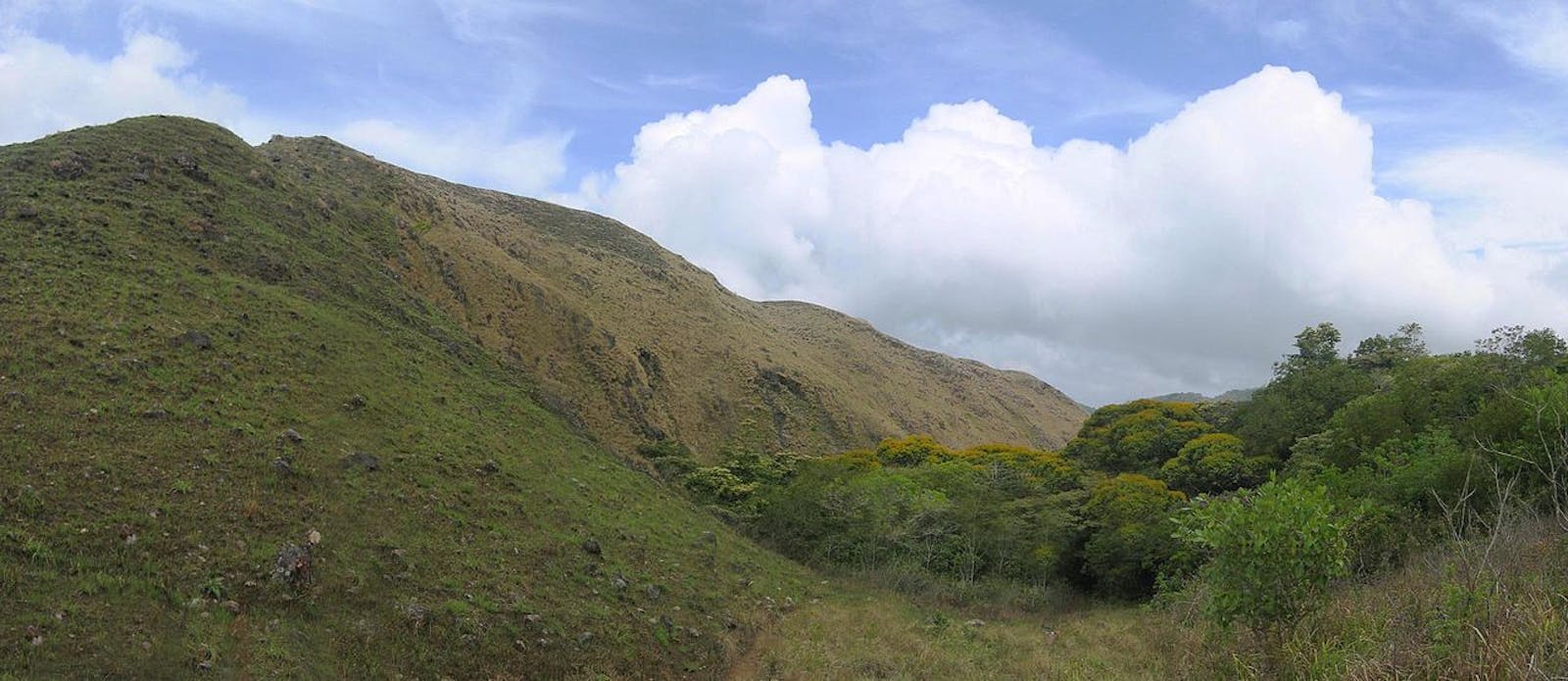Panamanian Dry Forests
The ecoregion’s land area is provided in units of 1,000 hectares. The conservation target is the Global Safety Net (GSN1) area for the given ecoregion. The protection level indicates the percentage of the GSN goal that is currently protected on a scale of 0-10. N/A means data is not available at this time.
Bioregion: Central American Isthmian & Colombian Coastal Forests (NT24)
Realm: Central America
Ecoregion Size (1000 ha):
512
Ecoregion ID:
541
Conservation Target:
14%
Protection Level:
1
States: Panama
The silky anteater can be found crawling through the canopy in search of its favorite food—ants, as their name suggests. These small white arboreal anteaters are primarily nocturnal and solitary, spending the day curled up in a “silky” ball sleeping among the tree branches. Although the species is not currently threatened with extinction, much of its lowland and coastal habitats are being converted to agriculture and for tourism and urban development. Silky anteaters rely on canopy connectivity in order to get around in the forests, and their populations have become isolated due to road building and subsequent fragmentation of remaining forest patches.

The flagship species of the Panamanian Dry Forests ecoregion is the silky anteater. Image credit: Creative Commons
Before human settlement, Panamanian Dry Forests were found in the lower and premontane portions of the Pacific slope (0–800 m), around the Bay of Panamá. Today the hillsides of Garachiné in the Darién region are the only unaltered habitat relics left of these original dry forests. The climate is characterized by average monthly temperatures of around 27ºC, with a dry season of at least 5 months and an average annual precipitation of less than 2,000 mm. Although the soils are shallow and relatively compact, the landscape favors farming and added irrigation during dry periods. Consequently, this ecoregion has been almost completely converted for agriculture crops and cattle ranching.
This ecoregion has a dry climate and relatively low plant diversity, which is distributed in distinct areas, such as small residual deciduous and semi-deciduous forests and gallery forests along the rivers. Unique flowering plants include Acacia collinsii and prickly pear. Mosses like the Pottiaceae and other bryophytes like Ricciaceae develop during the rainy season. Among ferns are the genera Blechnum and Thelipteris. On the Garachiné a small fringe of dry forest includes a significant diversity of trees. The isolated Panamanian Dry Forests are distinctly separated from the dry forests of Costa Rica and Colombia. Resident species are highly adapted to living with little availability of water and high solar radiation, and they demonstrate defenses against herbivory such as spiny vegetation.
There are some mammals that inhabit both the neighboring mangroves and the dry forests that contribute to the diversity of this area. Some tree-living mammals include the northern anteater, silky anteater, collared peccary, raccoon, and crab-eating raccoon. Reptiles found among the branches include snakes, iguanas, and the ctenosaur.
Fragmentation of this ecoregion is very high, leading to significant isolation of wildlife populations. Approximately 1% of the intact habitat becomes altered each year. This ecoregion is considered to have critical conservation status and is important due to its biological distinctiveness. In the largest original fragment of dry forest, near Parita Bay in the Provinces of Los Santos, Herrera, Coclé, and Panama, there is no current protected area and the native plants of this ecoregion have been almost entirely replaced.
Parts of Sarigua National Park (80 km2) and the Cenegón del Mangle Wildlife Refuge (8 km2) are in this ecoregion, but they correspond mainly to mangrove zones. The areas of dry forests left in the ecoregion include a small forest around Panama City, and a small strip of forest from Punta Garachiné to Punta Alegre in the Gulf of San Miguel. The Darién represents the last remnant of the dry forest in Panama and urgently needs preservation.
Most of the ecoregion has been severely altered by human activities. Current threats include strong pressure from cattle ranching, burning, and hunting. Agricultural activities of increasing scale have caused desertification. The priority conservation actions for the next decade will be to: 1) recover areas around Parita Bay by restoring and managing reserves already in existence; 2) establish protected zones around remaining rivers, streams, and other waterways; and 3) protect remaining dry forest from vegetation burning.
Citations
1. Andraka, S. 2018. Central America: Panama https://www.worldwildlife.org/ecoregions/nt0224. Accessed October 13, 2018.
2. Miranda, F., Meritt, D.A., Tirira, D.G. & Arteaga, M. 2014. Cyclopes didactylus. The IUCN Red List of Threatened Species 2014: e.T6019A47440020. http://dx.doi.org/10.2305/IUCN.UK.2014-1.RLTS.T6019A47440020.en. Downloaded on 16 October 2018.
3. Dinerstein, E., D. M. Olson, D. L. Graham, A. L. Webster, S. A. Primm, M. P. Bookbinder, and G. Ledec. 1995. A conservation assessment of the terrestrial ecoregions of Latin America and the Caribbean. DC.: WWF and The World Bank.



